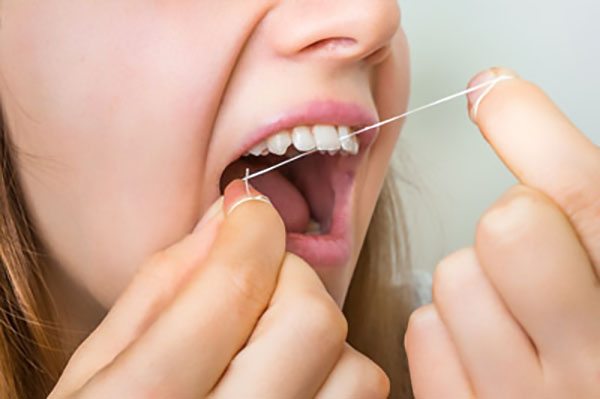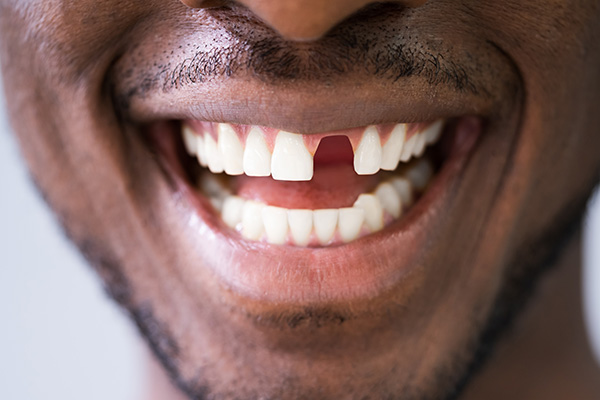Common Signs of Gum Disease

Gum disease is also known as periodontal disease. This is a condition that causes inflammation of the tissue around the patient’s teeth. It is caused by bacteria building up in the area. Keep reading to learn about some of the symptoms of this condition.
About gum disease
Periodontal disease is a progressive condition, meaning it gets worse over time. In the end, it can cause the teeth to be lost. It starts out as gingivitis, a bacterial infection. That causes the gums to become inflamed.
The toxins released by the plaque can destroy the jawbones and the gums. This will negatively affect how a person speaks, looks and chews. No matter what stage a patient is in, immediate treatment is required. There are several signs of each of the stages.
Swelling, redness or pain
The gums may look inflamed or feel painful. The infection can quickly spread and stopping it is critical. Without treatment, it can enter the bloodstream. Then it will affect other body parts.
Bleeding is another sign that patients might notice. Brushing or flossing can irritate the inflamed gums. However, even just eating can cause issues. Patients who are going through menopause or pregnancy can also have bleeding gums.
Bad breath
There are many causes of bad breath besides gum disease. For example, some foods may be very pungent. The smell can come from the lungs, back of the tongue or stomach. Tobacco use or smoking can also cause bad breath.
Sometimes, food particles are caught between the patient’s teeth and move under the gumline. However, patients who have gum disease are more likely to suffer from bad breath. With the pockets formed by the disease, food particles can become trapped there. This can be a red flag.
Receding gums and pus pockets
Gum disease can cause the tissue to move away from the teeth. It happens when the bacteria have damaged the tissue. This makes the teeth look longer. Then the smile will appear to be “toothy.” With treatment, the patient may receive gum grafts to restore the smile.
In more advanced stages, pus may appear between the teeth. The body makes this when it needs to fight off an infection. Antibiotics may be used before and during treatment. This can kill off harmful bacteria.
Loose teeth
In the more advanced stages, the teeth will start to become looser. The teeth will then shift around in the mouth. This happens when the bone tissue is destroyed. It can then no longer properly support the teeth. At this stage, the patient will most likely need to undergo several advanced treatments. The goal will be to save the remaining teeth.
Visit a dentist for gum disease treatment
If you are experiencing any of the symptoms above, you should seek treatment immediately. Your overall health can be negatively affected by this condition. The earlier that you catch gum disease, the more reversible it is. The right home care can go a long way toward treating it.
Request an appointment here: https://dentistryonpark.com or call Dentistry on Park, LLC at (781) 443-8131 for an appointment in our Stoughton office.
Check out what others are saying about our services on Yelp: Read our Yelp reviews.
Recent Posts
When searching for a dentist near me, families are often looking for more than just convenience. Quality, comfort, and trust can all help them select the right dental provider. Working with a trustworthy dental practice that understands your entire family's needs can make a lasting difference in your oral health.Dental health has a direct link…
If you're considering your options for replacing missing teeth, you may want to know when you should make your decision. In short, as soon as you can. Now, this is not always an option nor available at a moment's notice.Depending on the route you go, you're going to have to wait to let things heal.…
If you have a missing tooth or several missing teeth, you may wonder what your options for replacing missing teeth are. Fortunately, there are several replacement options. Dental implants are not the only option for replacing missing teeth. Continue reading to learn about the treatments available, along with the pros and cons of each treatment…
Dentures are a removable option for replacing missing teeth that can provide the wearer with either a full or partial set of false replacement teeth. Your best choice depends on the number of natural teeth that need to be replaced. In either case, a crucial aspect of successful denture wearing is proper care and hygiene…


